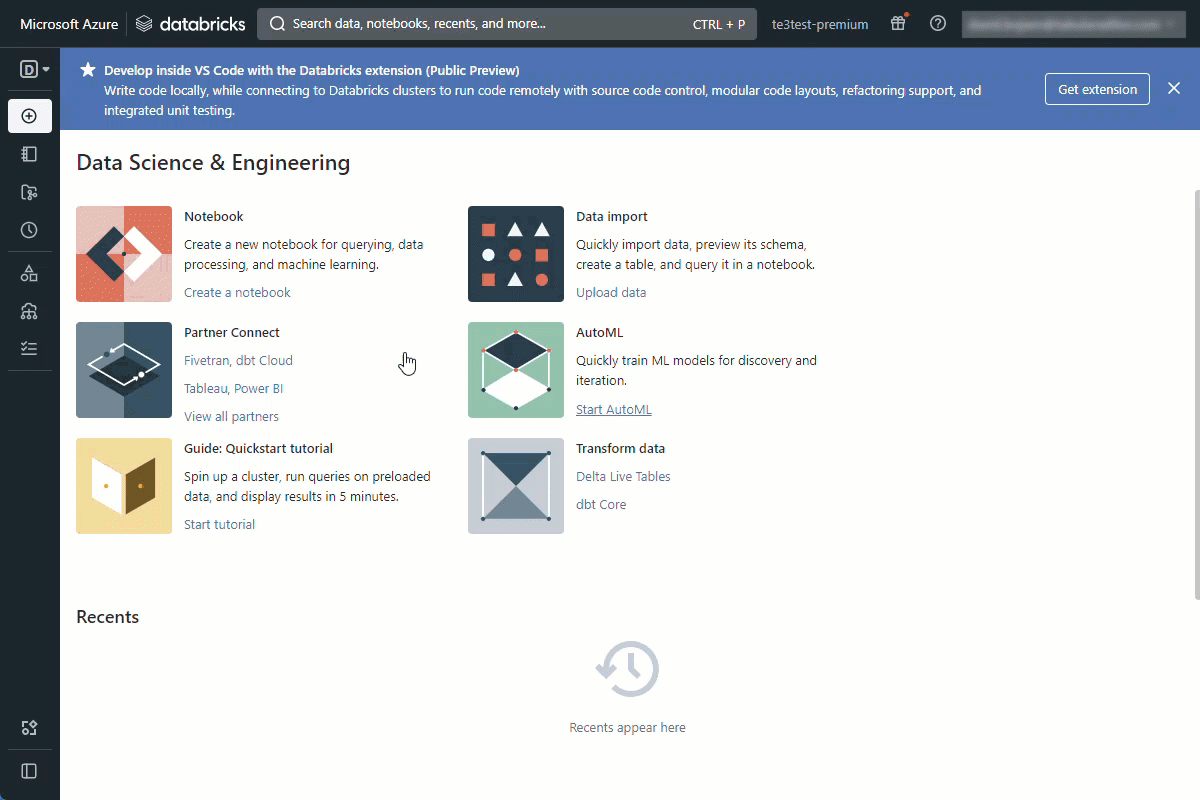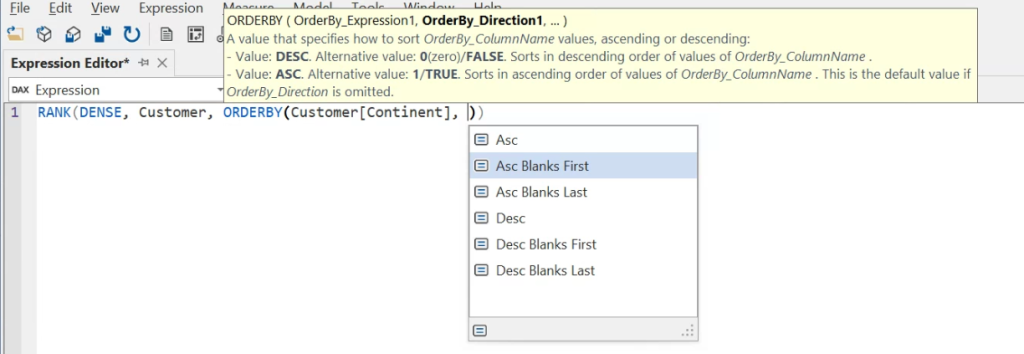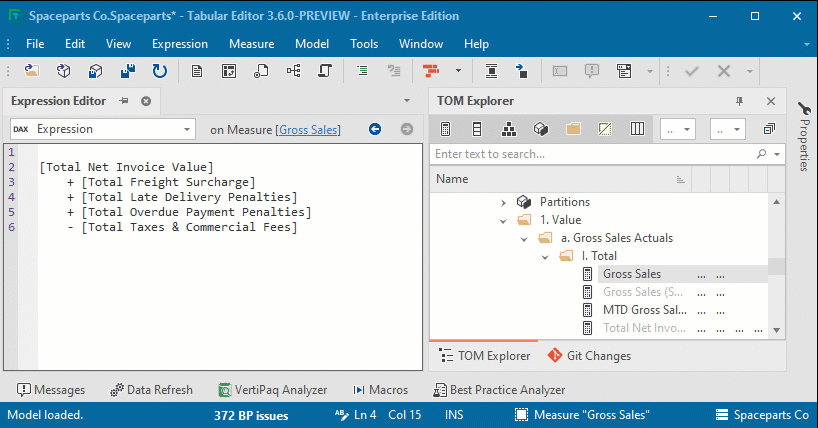We’re happy to share the April 2023 release of Tabular Editor 3 (TE3), which contains a much requested new feature –
the ability to connect to and import data directly from Databricks – see more below.
New features
Support for connecting and importing tables from Databricks

You can now connect natively to Databricks and import/refresh table metadata, when working on a Power BI Dataset from inside TE3.
You will need to install the Simba Spark ODBC driver on your development machine.
To import/refresh table metadata, you must open or create a Power BI Dataset and then use the Import tables or Update table schema wizards with an Implicit data source.

To prepare, you’ll need the connection details of the SQL endpoint from your Databricks instance:

With the Server hostname and HTTP path in hand, it’s time to start up Tabular Editor 3 and connect to your Databricks instance (in this example Azure Databricks, but it supports all flavors):
We hope you like this new native connector, please let us know if you find it useful or find areas that needs improvement.
Support for new DAX functions
In the April 2023 update of Power BI Desktop the new functions RANK and ROWNUMBER were announced. Moreover, the ORDERBY function has a new syntax allowing the use of any scalar value for the expression parameters, and a new set of keywords for the order-by parameter.

Release 3.6.0 includes full support for the the new functions and syntax in the DAX editor code completion.
You can see more info by visiting Jeffrey Wang‘s blog about the new functions.
Improvements
Dynamic format strings for measures
When adding a dynamic format string expression to a measure, we now clear the static format string property (as it is not possible for measures to have both static and dynamic format strings assigned).

Default compatibility level for Power BI Models
Default Compatibility Level for new Power BI models created with Tabular Editor is now 1601.
This compatability level allows you to set the FormatStringDefinition on measures, allowing for dynamic format strings mentioned in last section.
Moreover, the “create new model” dialog now lets you specify any compatibility level.

Several other minor improvements
Please see our release notes for full details.
Bug fixes
We have made some bug fixes in 3.6.0; please see our release notes for full details.
If you have any feedback or experience any bugs please reach out in our community forum. We look forward to hearing from you
Tabular Model Definition Language (TMDL)
TMDL is a new format for serilization of a data model, that resembles YAML. You can see more about this new format in the official Microsoft documentation.
Since the big announcement of TMDL at SQLBits earlier this year by Mathias Thierbach & Gabi Münster (watch it here), there has understandably been a lot of hype about this great addition.
We added support for TMDL in Tabular Editor 2 (TE2) this week (get that release here) and perhaps people was expecting support to show up in TE3 in this release.
However, we have decided to wait until the release of TMDL preview-2, which should be out in the near future due to some high impact known issues.
This is not because of a lack of commitment to TMDL from our side (quite the opposite), but from a wish to provide the most stable environment possible to our customers.
Hi David
Does this mean, that only Power BI Datasets (1601) support the dynamic format strings? Or can you set the level to 1601 on AAS models as well?
Hi Mads
Only Power BI Datasets (1601) support this.
You can see more here: https://notes.mthierba.net/power-bi/analysis-services/tom-compatibility-levels#1601-new-in-19.49-19-sep-2022.
BR David
What is that GIT changes section I see in the screenshot? Is that available in the release?
Hi Raj
Git integration is currently being tested in a private preview (should probably not have shown it in the blog post ;-)).
If you are interested in trying it out, please reach out to our support email.
BR David
Thanks David, I just filled support form for the Private preview.
Hi, when adding dynamic format strings to a measure through DAX Script, it does not update the model. Currently, the only way to add dynamic format strings for measures, is individually through Expression Editor, one measure at a time. I need to update multiple measures with dynamic format strings through DAX Script, can you please include this in the next release? This is critical for me to be able to use the new dynamic formatting feature and update the hundreds of measures already in place. Please and thank you!
Hi Robbie
I have replicated your issue, and will look into a solution.
Can I ask you to create an issue here, so we can track it together: https://github.com/TabularEditor/TabularEditor3/issues
BR David
Done! Thank you for the quick reply and action!
[Issue] Dynamic Format Strings to Measure via DAX Script #883
Just a thought as I use C# scripting myself, but you could as part of the script set the model version
Hi Robbie
To help you speed things up right now, you can perform the changes using C# Scripting, if that is feasible for you:
var grossSales = Model.AllMeasures.First(mes => mes.Name == "Gross Sales");grossSales.FormatString = "";
grossSales.FormatStringExpression = @"SELECTEDVALUE(
Currency[Currency FormatString],
""#,#00""
)";
BR David